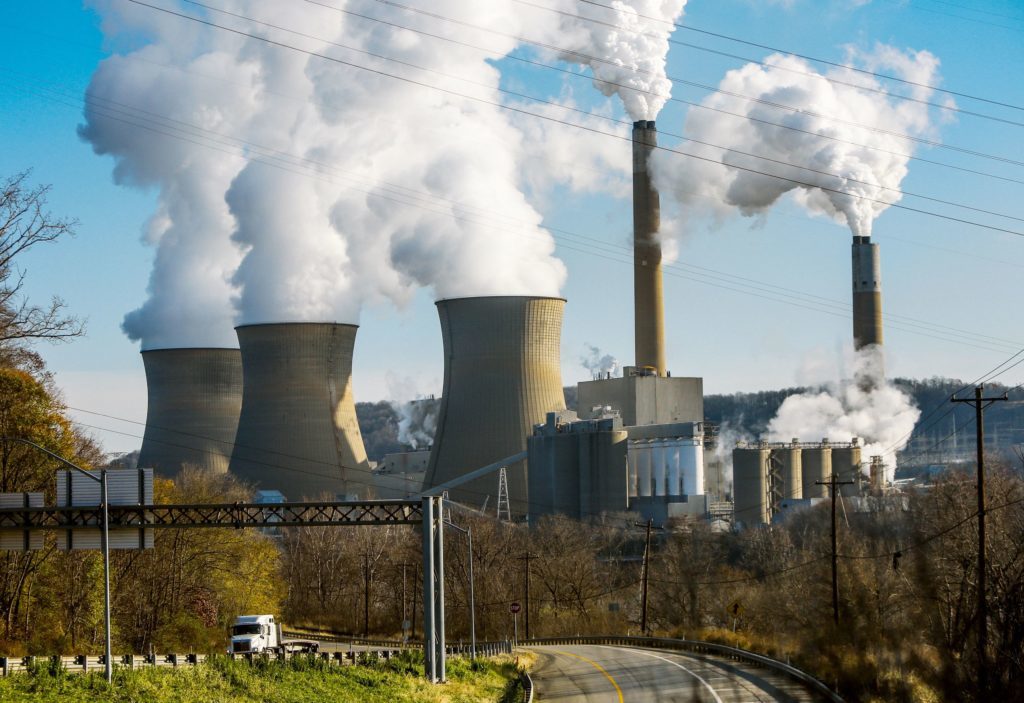
After powering the British economy for centuries, coal is a dying breed in the nation’s energy mix.
The combustible sedimentary rock accounted for as much as 40% of the electricity generation only six years ago, but that figure dropped to 5% last year. By the middle of the next decade, there won’t be any plants left at all as the government plans to go completely coal free.
Though still the most widely used in the world to generate power, coal is to a large extent a victim of the plunging costs for wind and solar. Only a few years ago, it was unfathomable to build an energy system without it. Now, an increasing number of governments, from the U.K. to Germany and the Netherlands, have set targets for its extinction to meet climate targets. Higher prices on emitting carbon pollution also are tipping the economics away the dirtiest fossil fuel.
On Monday, Electricite de France SA said it had turned off its Cottam plant, which was built in 1968 and supplied more than 3 million homes. That leaves just a handful of stations open, and they’re due to close over the next few years.
Below is a list of the plants still going in the order of when they are due to shut:
Fiddlers Ferry
SSE Plc, which is transforming itself from a traditional utility to a renewables and grid company, plans to close the unprofitable 1,500-megawatt plant by the end of March. It’s ability to make money there was hurt by less frequent running hours and limited success in auctions for power purchase contracts, the Scottish company said when it announced the closure in June.
Aberthaw B
German utility RWE AG, Europe’s biggest emitter, also plans to shut down its last remaining U.K. coal plant in March 2020. The unit in south Wales opened in 1971 and has the capacity to generate 1,560 megawatts of electricity, enough for more than 1.5 million homes. “Market conditions made this decision necessary,” Roger Miesen, chief executive officer of RWE Generation, said in August.
Drax
Drax Group Plc’s giant power station in North Yorkshire was once western Europe’s biggest coal plant and accounted for 7% of the nation’s electricity consumption. The operator has converted four of its six units to burn biomass instead. Just 6% of its output came from coal in the first half of the year. The remaining two units of 600 megawatts each could close in 2023, according to a spokeswoman.
West Burton A
The 2,000-megawatt plant in central England began to supply power in 1969. It’s owned by EDF, which says it sees coal as a short-term solution in the nation’s transition to a low carbon energy system. The plant’s four units will operate until at least 2021 because of contracts signed with RWE as well as capacity-market agreements, according to a spokesman.
Ratcliffe
German utility Uniper SE owns the 2,000-megawatt plant in Nottinghamshire that was commissioned between 1967 and 1970. The plant has capacity agreements in place until September 2022 and all agreements will be honored, said a company spokeswoman. Decisions regarding any closure date are yet to be made, she said.
Kilroot
The facility in Northern Ireland was bought by Czech Republic power producer Energeticky a Prumyslovy Holding AS in April. It was part of a group of six power plants in the U.K. and Jordan purchased for a total of $211 million from AES Corp. The EPH press office didn’t respond to a request for more information about the plant’s future.
Even after all those coal power plants close, the U.K. will still use the fuel for industrial processes.
The government in March approved the country’s first deep coal mine in more than 30 years. The Woodhouse Colliery, in northwest England is expected to start producing met coal early next decade.
Recommended for you
